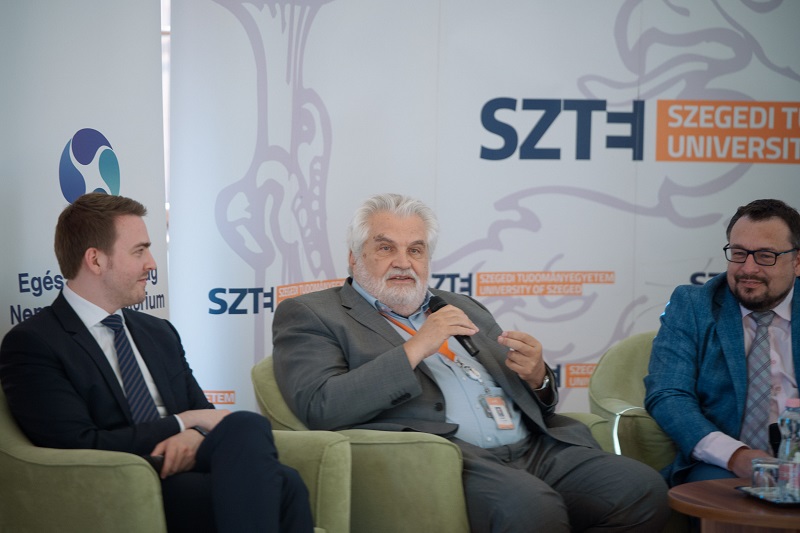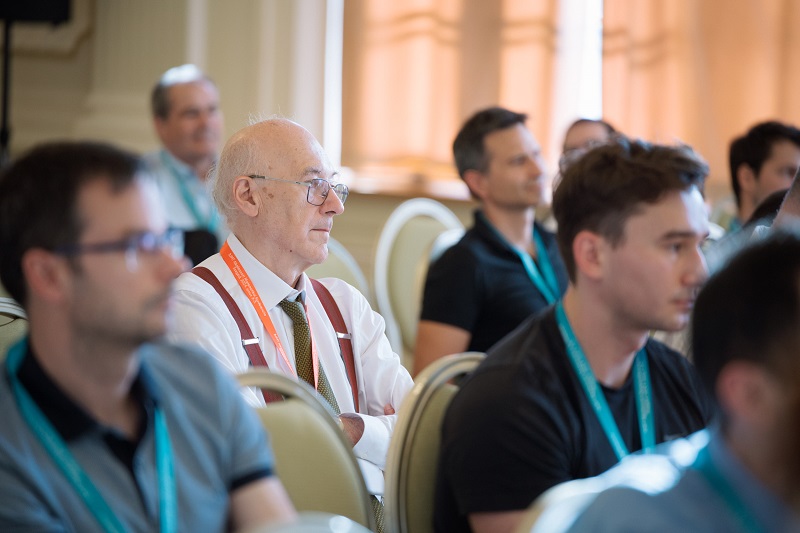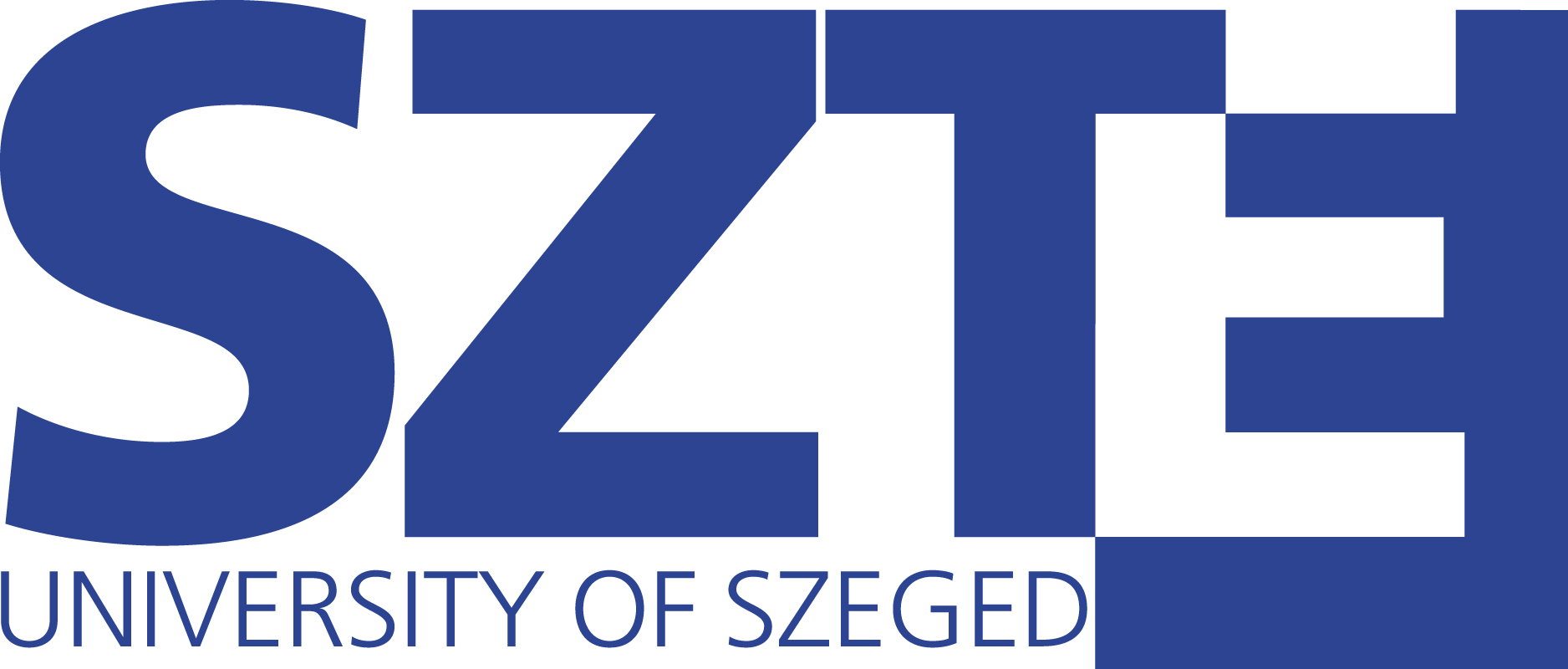
In Hungary, the innovation-oriented sectors require more and more mathematically qualified professionals, but, no matter how much money there is for innovation, if the supply of specialists does not improve. Therefore, it is time to give mathematics a new image, for which a good basis is the fact that in developed countries it is no longer fashionable to be "stupid at math" since 90 percent of mathematicians land well-paying jobs.
How does math make someone competitive? What is the innovation significance of the scientific field? This is what the participants of the Applied Mathematics Conference's discussion on innovation – László Bódis, deputy state secretary responsible for innovation, Gábor Szabó, Széchenyi Prize-winning physics professor at SZTE and president of the Hungarian Innovation Association, Péter Simon, university professor, head of the ELTE Institute of Mathematics and secretary general of the János Bolyai Mathematical Society, and Gergely Röst, head of the Department of Applied and Numerical Mathematics at SZTE and professional leader of the National Laboratory for Health Security – sought to answer.
What is the share of applied mathematical knowledge in a country's innovation capacity? For the answer, the definition of innovation must first be accepted, of which there are about 60 different definitions. Mathematician Gergely Röst considered the best of these definitions to be the one according to which innovation is a novel idea that is implemented and thereby becomes something better than it was before. According to the main definition of Deputy State Secretary for Innovation László Bódis, innovation is equal to the product of invention and commercialization. According to the bonmot of physics professor Gábor Szabó, the concept with 60 definitions can also be described with the word “thingy". According to him, the point is that innovation is a novelty, which, when implemented, provides an economic advantage; however, this definition does not explain everything either. For example, the professor does not know the exact answer to whether ChatGPT can create a patent until the concept of the inventive step mentioned by the law is fully clarified. One thing is certain, said Gábor Szabó, something that was not planned for the international market in the first place is not innovation.
According to the data of László Bódis, 47% of the global innovation output comes from China, 17% from the United States, and only 5% is realized in the European Union. Regarding scientific output, the EU's share has decreased from 25% in 2007 to 17% in 2023 due to development in the Far East. In terms of innovation, Hungary ranks 33rd globally and 21st in the European Union; this includes the performance of multinational companies, which account for 42% of domestic GDP. In terms of the number of Nobel laureates compared to the size of the economy, Hungary ranks 11th in the world.
State spending on innovation more than doubled between 2016 and 2023, so according to László Bódis, Hungary's development now depends on whether there will be enough specialists in the natural sciences or other specialists trained in non-technological innovation in the country. In addition to not enough specialists, the weak point of the Hungarian innovation sector is that only every third of the domestic small and medium-sized companies have an innovation activity; while the EU average is 53%. Gábor Szabó even disputed this one-third from the point of view of the qualified professionals.

László Bódis, Gábor Szabó and Gergely Röst at the discussion. Photo: Péter Zentai
Gábor Szabó agreed that the increase in state expenditures will not be useful without the supply of specialists and that the universities also have a responsibility in this.
– So far, I don't see a change in culture at Hungarian universities that would teach students how to be innovators. I have experienced at US universities that the students there see it as a realistic alternative that they can create their own workplace after graduation, that is, they can use what they have learned in their own business, added the president of the SZTE board of trustees.
According to Gergely Röst, international examples clearly show that mathematical knowledge is an important part of a country's innovation ability. The European Strategic Research Agenda (SRA) of EU-MATHS-IN, for example, identified modeling, simulation calculations, optimization, and the data economy as the most important areas to contribute to the economy. According to The Era of Mathematics, a 2018 report by the UK-based Engineering and Physical Sciences Research Council (EPSRC), UK public expenditure on mathematics research has the highest rate of return of any field. Based on international indices, there is a clear correlation between the competitiveness of a country and the average mathematical abilities of employees.
As an example of the utilization of applied mathematics, Gergely Röst cited the protection of power plant generators – where an hour's downtime causes a loss of 200,000 euros –against overheating, based on mathematical technology. The strengthening of protective dams in the Netherlands was optimized using mathematical methods, resulting in savings of more than 4 billion euros. He mentioned the research based on which each reorientation maneuver of the International Space Station can save $1 million in fuel costs. Gergely Röst also added that the Institute of Mathematics at Oxford University has about 80 industrial partners among the largest international companies.
The knowledge in Hungarian mathematics is also strong at the international level; this is indicated not only by the Hungarian Abel Prize winners Péter Lax, Endre Szemerédi, and László Lovász but also by a large number of Hungarian mathematicians working at the world's best universities. Among them, for example, is György Haller, who came from Switzerland's ETH Zurich to the Szeged conference as a plenary speaker, and there is also a professor in Cambridge who was a student in Szeged.
Among the winning Hungarian applications of the European Research Council (ERC), about 20 percent are projects with mathematical content, while at the EU level, the share of mathematics is 2-3%. Compared to this, however, Hungarian mathematics has a smaller share of innovation in Hungary. Gergely Röst presented the admission data of the past decade: the number of students admitted annually to the mathematics major in Hungarian higher education is around 200-250; thus, in all Hungarian universities, less than 1,000 mathematics students are studying at the same time, while in Germany, the Technical University of Berlin alone has more than 1,000 students studying mathematics. The Hungarian economy could employ several times the current number of employees.

At the panel discussion on innovation at the Applied Mathematics Conference of the János Bolyai Mathematical Society. Photo: Péter Zentai
According to Péter Simon, university professor and head of ELTE's Institute of Mathematics, it is no longer fashionable to be "stupid at math" in the most developed countries, as it is already widely known that 90 percent of those who graduate with applied mathematics work in well-paying jobs in industry and finance. The participants of the conversation agreed that these jobs are already offered by the Hungarian industry and the financial sector, but this information has not yet reached high school students, parents, and teachers. Péter Simon said that they are trying to get close to both teachers and students with the popularizing mathematics magazine Érintő; he also asked for articles from the audience of the conference for the magazine.
We have been living in the age of the natural sciences for 300 years, stated Gábor Szabó. According to him, the development of the natural sciences continuously increases the importance of mathematics, and today neither experimental science nor technological development can function without simulation calculations. According to the professor, the stagnation happened in education, because in schools they do not sufficiently connect calculation knowledge with natural science experience, for example, the teaching of physics in schools is as if computers had not yet appeared. If this attitude were to change, it would also affect young people's ability to innovate.
László Bódis also believed that applied mathematics could be a breaking point in innovation for Hungary:
– Mathematics doesn’t have good marketing at the moment, there is still a stereotype in the public mind that mathematicians only deal with calculations on checkered paper, while modern technological development no longer exists without mathematics.
Péter Simon drew attention to the fact that current school mathematics education covers knowledge up to the 16th century, and university engineering mathematics covers knowledge up to the end of the 19th century. On the other hand, Gábor Szabó, who also teaches a course in Newtonian mechanics, thinks that the school teaching of modern physics cannot be successful because it does not take into account the limits of students' abstraction abilities. The students receive theoretical knowledge that they cannot connect with their experiences, and they do not yet have the knowledge of calculations. However, according to Gábor Szabó, there is no knowledge without striving for understanding. 95 percent of first-year students do not get to the point where they can say: "I don't understand" the concept of a phenomenon; and whoever does not say this, does not even get to the point of understanding. According to the professor, it is a mistake if concepts and not understanding are taught in science education.
In conclusion, the participants of the discussion emphasized that knowledge of mathematics at a usable level provides excellent career opportunities in Hungary as well. Referring to domestic school surveys, Gergely Röst claimed that the situation is not hopeless and that mathematics is not as hated a subject among students as we think, in fact, it is in the middle ground. According to the head of the applied mathematics department of SZTE, mathematics programs are also popular at the university's events for a wider audience. Gergely Röst believes that more people will apply for mathematics courses if it is possible to make people aware that not only the winners of national competitions should study to be a mathematician, but also anyone who is interested in mathematics and wants to use their knowledge to solve problems in life since applied mathematicians are awaited in multiple modern sectors where they can expect excellent career opportunities. Gábor Szabó added that some theoretical physicists are also regularly employed in the banking sector, as they can use their statistical and modeling skills in the financial field as well.
Written by Sándor Panek
Featured image: László Bódis, deputy state secretary responsible for innovation, Gábor Szabó, Széchenyi Prize-winning physics professor of SZTE, Gergely Röst, head of the Department of Applied and Numerical Mathematics at SZTE, and Péter Simon, university professor, head of the ELTE Institute of Mathematics. Photo: Péter Zentai

